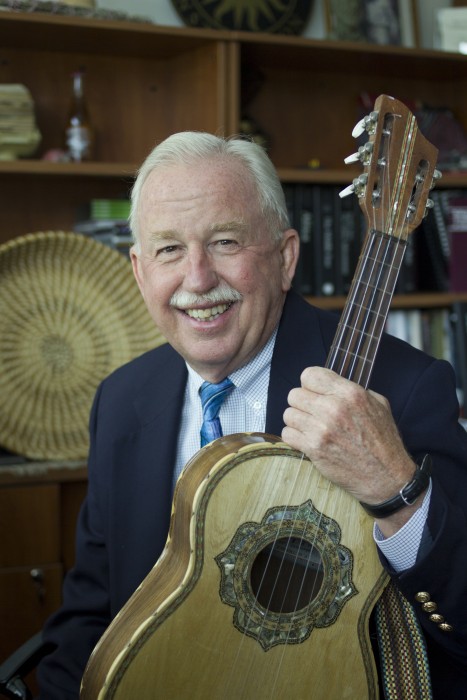Safety, sustainability, social media and some seriously weird frogs in the spotlight
Have you reached a milestone, received an award or conquered the world (at least your little corner of it) lately? Let us know at torch@si.edu. We want to toot your horn for you! Be sure to include your contact information and a picture as an attachment.
National Museum of American History
Arthur Molella, director of the Lemelson Center, is being honored with the endowment of the Arthur Molella Distinguished Fellowship at the National Museum of American History. The $780,000 endowment will establish a scholar-in-residence program at the museum’s Jerome and Dorothy Lemelson Center for the Study of Invention and Innovation. A public historian for over four decades, Dr. Molella has served as the director of the Lemelson Center for more than 20 years. He will step down from that post this summer but continue to work with the center in an emeritus role.

Dr. Arthur Molella, director of the Lemelson Center for the Study of Invention and Innovation at the American History Museum.
Smithsonian Folkways
Daniel Sheehy, director and curator of Smithsonian Folkways Recordings, has been named a 2015 National Heritage Fellow by the National Endowment for the Arts. He is the recipient of the Bess Lomax Hawes NEA National Heritage Fellowship, a special distinction that recognizes an individual who has made a significant contribution to the preservation and awareness of cultural heritage.

Daniel Sheehy
Director, Smithsonian Folkways
(Photo by Ashlee Duncan / Smithsonian Center for Folklife and Cultural Heritage)
Smithsonian Environmental Research Center
The 92,000-square-foot Charles McC. Mathias Laboratory at the Smithsonian Environmental Research Center in Edgewater, Maryland was awarded with platinum LEED designation for sustainable design. Opened in September 2014, the lab is the first Smithsonian building with a platinum designation. It emits 37 percent less CO2—and saves an estimated 42 percent on energy costs—compared to a similar lab that does not meet LEED certification standards (Leadership in Energy and Environmental Design), making it the greenest Smithsonian building to date.

Drawing on geothermal and solar power, and other features such as automated lighting, the Mathias Lab is estimated to be 42 percent more energy efficient than a non-LEED-certified lab. (Photo by Chuck Gallegos)
Pan-Institutional
The 2014 Smithsonian Summer Showdown, a social media campaign to vote on our most iconic objects, won the CASE (Council for Advancement and Support of Education) International Circle of Excellence Gold award, in the category of Digital Communications—Best Uses of Social Media. The 2015 Summer Showdown will feature the theme Most (Seriously) Amazing! Watch for announcements and hashtags and get ready to get social.
Keith Braesicke, of the National Zoo’s Conservation Biology Institute, Suzanne Davis of the National Museum of the American Indian, Alana Olson of the Offices of Facilities Management and Reliability and the team of Jennifer Clark and Barbara Watanabe were the recipients of the 2015 Outstanding Achievement in Safety Awards presented by the Office of Safety, Health, and Environmental Management’s Safety Recognition Committee for their leadership in helping to keep the Smithsonian safe for staff, visitors and collections. Watch the June 25 awards ceremony >>
Smithsonian Enterprises
The Smithsonian Channel tied for first with NBC and CNN in the number of nominations (six) received for the Realscreen Awards, which recognize the best in reality, documentary and factual entertainment programming from around the world. At the Realscreen West conference in Santa Monica in early June, the Channel’s program “Crazy Monster Frogs” won the award for best non-fiction environmental and natural history program. Watch the program >>

The Smithsonian Channel program Crazy Monster Frogs won a RealScreen Award for best non-fiction environmental and natural history program.
Posted: 16 July 2015
-
Categories:
American History Museum , Environmental Research Center , Kudos , News & Announcements



